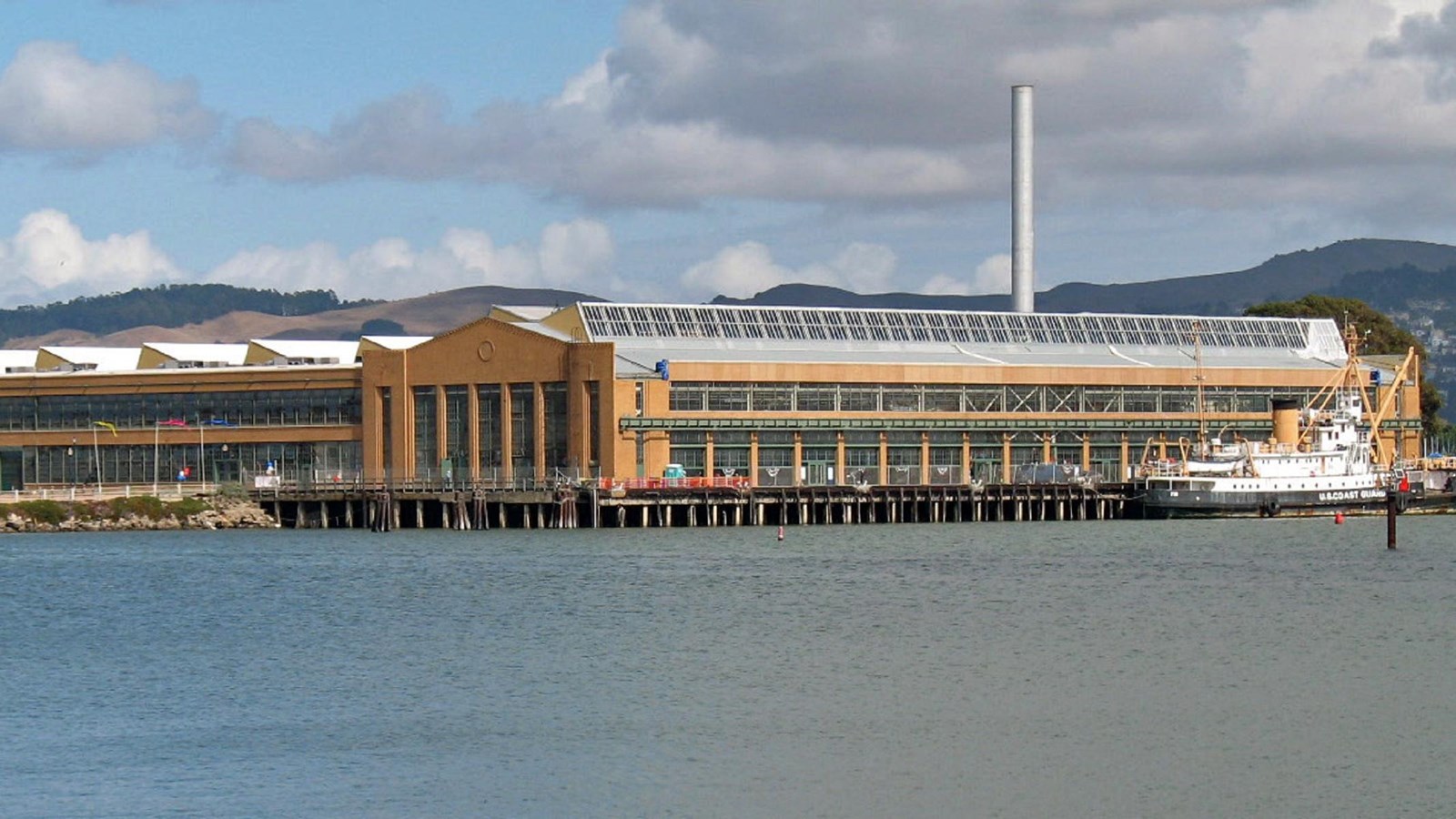Last updated: February 9, 2024
Place
Ford Motor Company Assembly Plant

Photo by Sanfranman59, CC BY-SA 3.0, https://commons.wikimedia.org/w/index.php?curid=6591983
The Ford Motor Company Assembly Plant in Richmond, California, was the largest assembly plant to be built on the West Coast and its conversion to wartime production during World War II aided the Nation's war effort. Built in 1930 during the Great Depression, the assembly plant was measures nearly 500,000 square feet. The factory was a major stimulant to the local and regional economy and was an important development in Richmond's inner harbor and port plan. Ford became Richmond's third largest employer, behind Standard Oil and the Santa Fe Railroad. It is also an outstanding example of 20th-century industrial architecture designed by architect Albert Kahn, known for his "daylight factory" design, which employed extensive window openings that became his trademark. The main building is comprised of a two-story section, a single-story section, a craneway, a boiler house and a shed canopy structure over the railroad track.
To ensure that America prepared for total war by mobilizing all the industrial might of the United States, President Franklin D. Roosevelt banned the production of civilian automobiles during WWII. The Richmond Ford Assembly Plant switched to assembling jeeps and to putting the finishing touches on tanks, half-tracked armored personnel carriers, armored cars and other military vehicles destined for the Pacific Theater. By July of 1942, military combat vehicles began flowing into the Richmond Ford plant to get final processing before being transported out the deep-water channel to the war zones. The "Richmond Tank Depot" as the Ford plant was then called, helped keep American fighting men supplied with up-to-the-minute improvements in their battle equipment. In mobilizing the wartime production effort to its full potential, Federal military authorities and private industry began to work closely together on a scale never seen before in American history. This laid the groundwork for what became known as the "Military Industrial Complex" during the Cold War years. This Assembly Plant was one cog in the mobilization of the "Arsenal of Democracy" and a historic part of what is today's industrial culture of the United States.
After the war, the devastation to the local economy as a result of the closing of the Kaiser shipyards would have been crippling had it not been for the continued production of the Ford Plant. The last Ford was assembled in February 1953, with the plant being closed in 1956 because of the inability to accommodate increased productivity demands. In 1989, the Loma Prieta earthquake severely damaged the plant. The City of Richmond repaired and prepared the Ford Assembly building for rehabilitation. Orton Development was then selected and various businesses ended up leasing spaces throughout the building. The Rosie the Riveter Visitor Education Center is now housed in the historic "Oil House", which historically was used to provide power for automobile production in the factory.
The Ford Motor Company Assembly Plant, part of the National Park Service's Rosie the Riveter World War II--Home Front National Historical Park, is located at 1414-1422 Harbour Way S. between the Harbor Channel and the Inner Harbor Basin in Richmond. The plant is currently closed to the public. For further information, visit the park's website.
